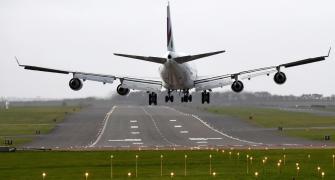The AQ Khan nuclear malaise has disseminated to places beyond the usual suspect countries, says a report in the New York Times.
Four years after Abdul Qadeer Khan, the leader of the world's largest black market in nuclear technology, was put under house arrest, much more shocking revelations are coming out of the scientist's network's computers.
Investigators now fear that the blueprints for a sophisticated and compact nuclear weapon could have been passed to many more countries.
Officials say the parts of the design were coded so that they could be transferred quickly to an automated manufacturing system.
Working in secret for two years, investigators have tracked the digitized blueprints to Khan computers in Switzerland, Dubai, Malaysia and Thailand.
The blueprints are rapidly reproducible for creating a weapon that is relatively small and easy to hide, making it potentially attractive to terrorists, says the report.
As the development leaves the world worried, Pakistan, it seems, is in no mood to take the probe further. It is learnt that Pakistan is even thinking of setting him free. In recent weeks, American officials have privately warned the new government in Pakistan about the dangers of doing so, the report adds.
"We've been very direct with them that releasing Khan could cause a world of trouble," a senior US official who has been involved in the effort said last week.
"The problem with Pakistan these days is that you never know who is making the decision -- the army, the intelligence agencies, the president or the new government."
The illicit nuclear network run by Dr. Khan was busted in 2004. President Bush, eager for an intelligence victory after the failure to find unconventional weapons in Iraq, declared that ending Dr. Khan's operation was a major coup for the United States.
Since then, evidence has emerged that the network sold uranium enrichment technology to Iran, North Korea and Libya. Investigators are still pursuing leads that he may have done business with other countries.
Only in recent months that officials have begun to confirm that they had found the design for a bomb itself among material seized from some of Dr. Khan's top lieutenants, a Swiss family, the Tinners, the report said.
The same design documents were found in computers in three other locations connected to Khan operatives, the report said.
The blueprints bear a strong resemblance to weapons tested by Pakistan a decade ago, said two diplomats involved in the investigation.







